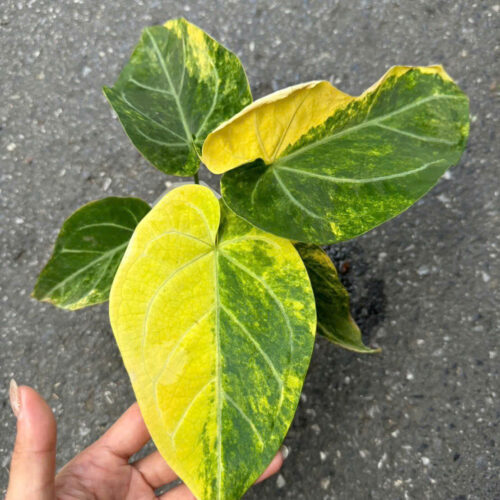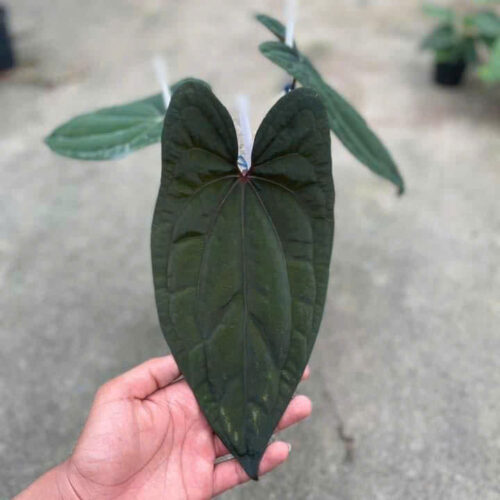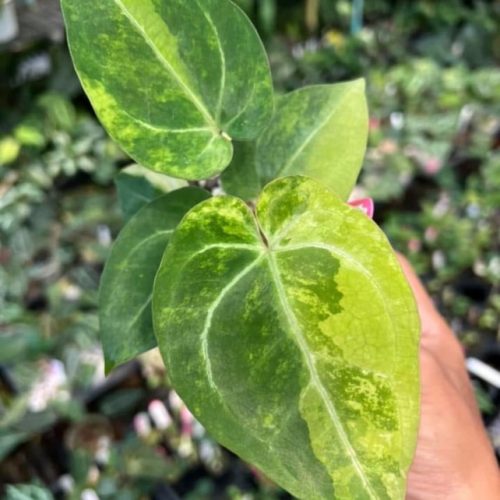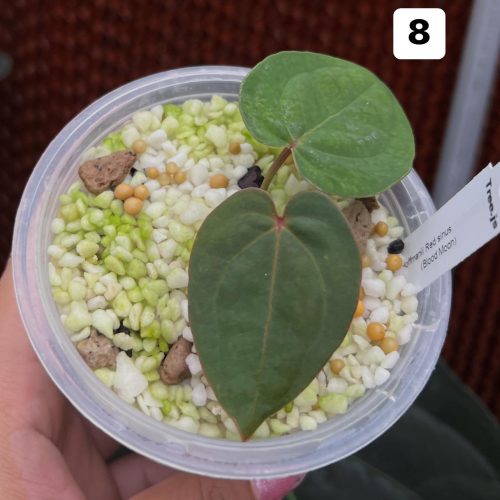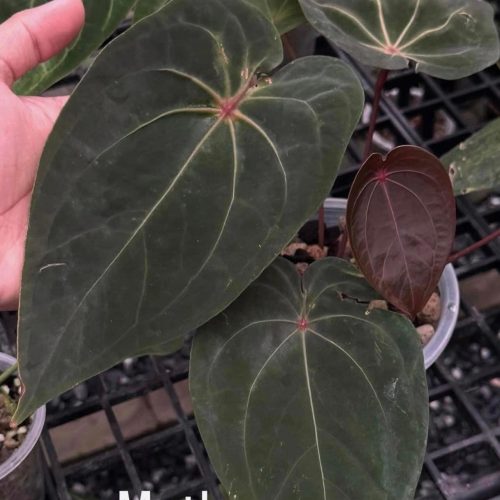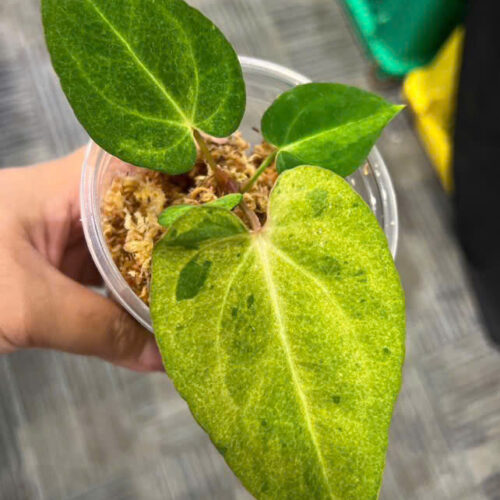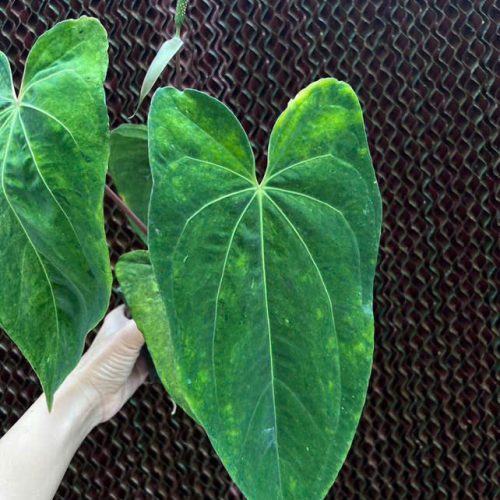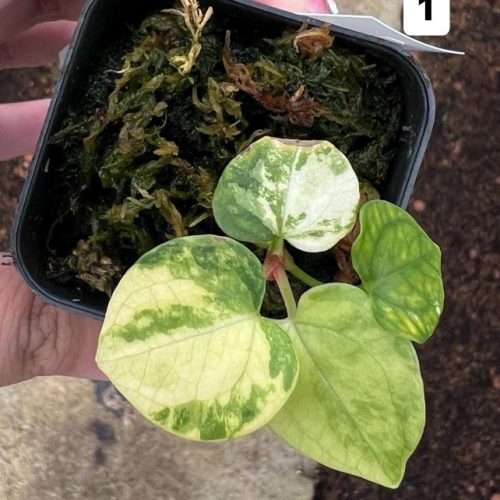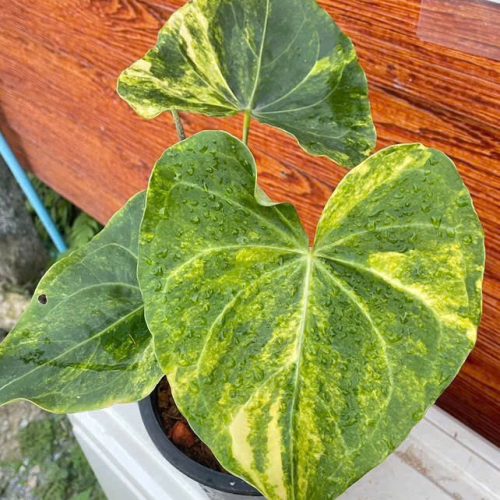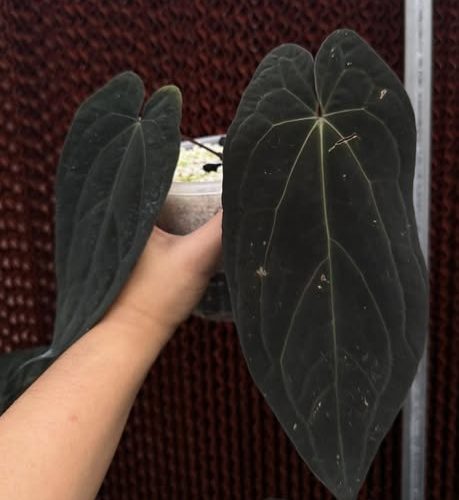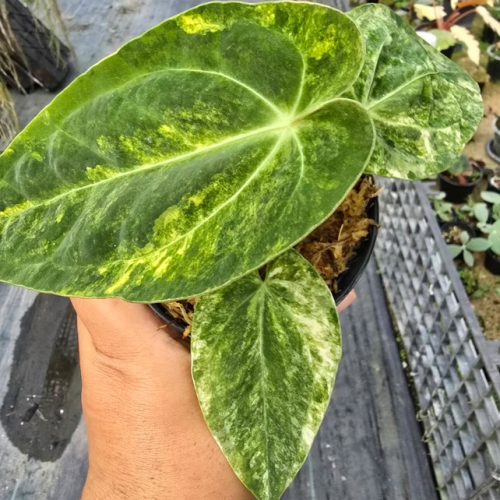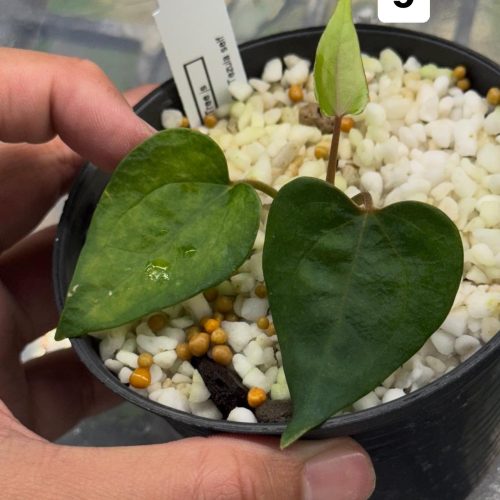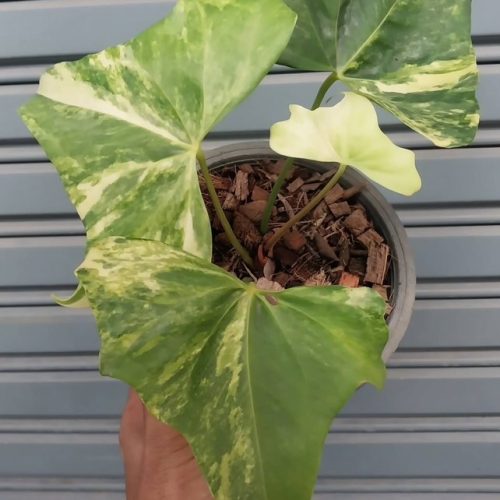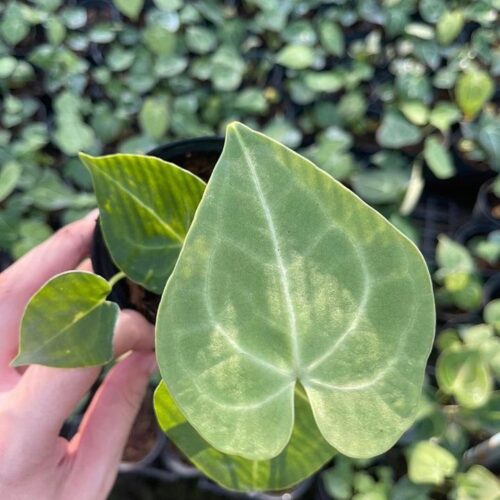The Anthurium Warocqueanum Queen is a stunning tropical plant known for its rare, long heart-shaped leaves and exotic velvety appearance. This rare anthurium has made quite the entrance into the world of unique houseplants and exotic indoor gardening.
With proper care, the Anthurium Warocqueanum can thrive indoors, adding a dramatic focal point to any space with its large, deeply lobed foliage in shades of dark green. Its rarity and botanical interest also make it a coveted collector’s item for houseplant enthusiasts.
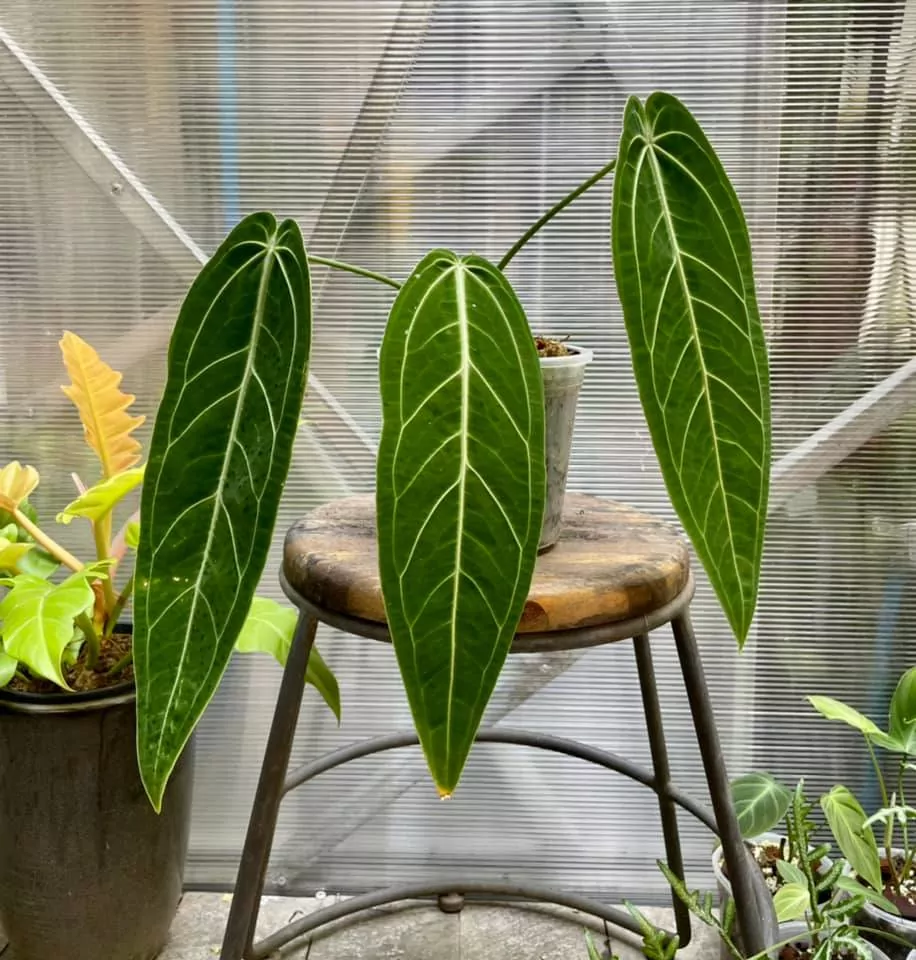
Growing Conditions
Light Requirements
The Anthurium Warocqueanum thrives in bright, indirect light indoors. Although it prefers shadier conditions than many tropical plants, adequate light is still essential.
For those interested in learning about the specific light and care requirements for various anthurium species, including the Warocqueanum, learn more about the care and maintenance of diverse anthurium species in our comprehensive guide.
- North or east-facing windows work well to provide the right balance of light without scorching the leaves. You may need to provide some shade with a sheer curtain.
- Low to moderate light can result in slower growth. Insufficient light causes loss of the vibrant leaf coloration.
- Direct hot sunlight will burn the delicate foliage, causing brown crispy spots and damage. Filter the light to create ideal growing conditions.
Temperature & Humidity
Warm temperatures between 60-80°F suit the Anthurium Warocqueanum best. Cooler temperatures below 55°F can damage the tropical foliage.
- Maintain indoor humidity levels above 50% to prevent leaf browning on the margins or tips. Use a humidifier or pebble tray to increase moisture in the surrounding air.
- Daily misting of the plant also boosts humidity while cleaning dust off the velvety leaves. Just avoid wetting the crown where new leaves emerge.
Soil Needs
A well-draining potting mix is vital for healthy roots and lush growth of the Anthurium.
- Use a quality potting soil formulated for aroids and tropical plants, or create your own mix containing compost, perlite or bark for drainage.
- The soil should retain some moisture but drain excess water. Soggy soil leads to root rot in this rainforest plant.
Watering Habits
- Water thoroughly once the top inch of soil becomes dry, taking care not to oversaturate the soil. Allow for drying out slightly between waterings.
- Yellowing leaves indicate under-watering. Leaf spotting or brown crispy patches usually signal overwatering issues. Adjust your schedule based on the soil moisture and plant needs.
- Water with room temperature filtered or distilled water. Tap water containing chemicals and salts can burn the foliage tips over time.
To gain a deeper understanding of the best watering practices and overall care for anthuriums, explore our detailed guide on thriving anthuriums to keep your plants healthy and flourishing.
Fertilizer
- Use a balanced houseplant fertilizer at half strength during the active growing season from spring through summer. Fertilize monthly.
- Avoid over-fertilizing which can cause leaf burn. Rinse the foliage after applying to prevent damage.
- Take a break from fertilizing over the cooler winter months when growth naturally slows. Resume in spring as warmer weather returns.
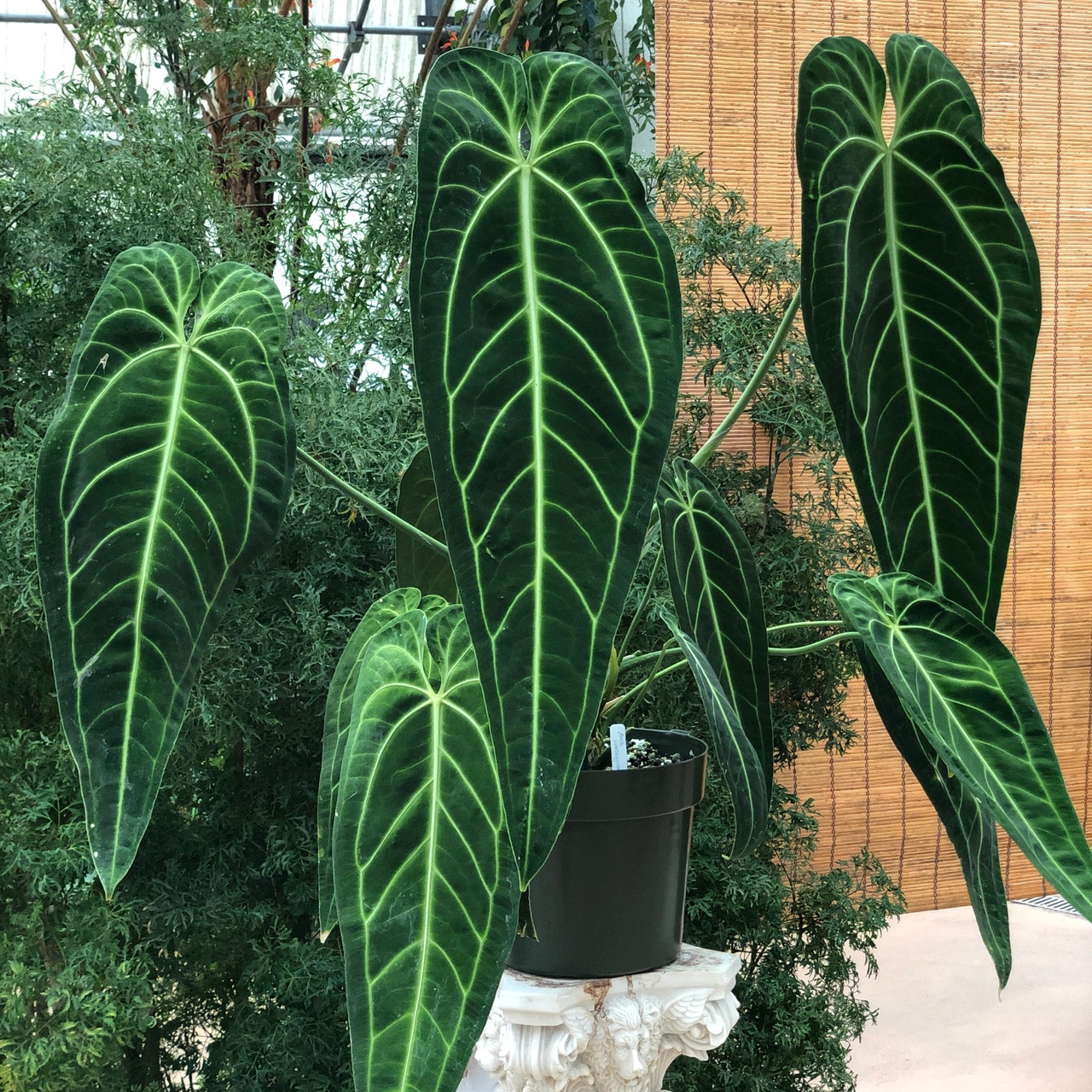
Propagation
The Anthurium Warocqueanum propagates easily by division of the roots or plantlets growing on the flower spike. Here’s how to multiply your plant:
Division
Gently divide the root ball using a sterile knife or shears, ensuring each new section has plenty of healthy roots and some foliage. Repot the divisions in small pots using fresh houseplant soil. Keep evenly moist, out of direct sun while establishing over a few weeks before transitioning back to its original spot.
Plantlets
If your Warocqueanum blooms, wait for the small plantlets (propagules) to emerge on the flower spike once the blossom fades. Carefully twist these off when they have a few leaves and aerial roots, then pot up individually to create exact replicas of the mother plant. Keep warm and humid while rooting.
If you’re looking to expand your collection or share this stunning variety with fellow enthusiasts, discover effective methods for propagating anthuriums in our step-by-step propagation guide.
Common Issues
When given the proper care, Anthuriums are generally vigorous and resilient houseplants. But they may encounter a few problems:
Leaf Spotting/Browning
This unsightly damage usually arises from overwatering, low humidity, too much fertilizer, or poor drainage. Troubleshoot your care routines to remedy the underlying issue leading to stressed foliage. Trim off any severely affected leaves.
Slow Growth
Inadequate light often slows growth considerably. Try a brighter location filtered from direct sun. Insufficient nutrients can also limit development. Apply a balanced fertilizer monthly through the growing season for lush results.
Root Rot
Excess moisture around the roots invites fungal rot pathogens. Repot immediately into fresh suitable soil if drainage becomes poor. Space out watering appropriately for your environment after checking soil moisture levels. Discard any rotted sections and propagate healthy parts if needed. Good airflow also prevents rot.
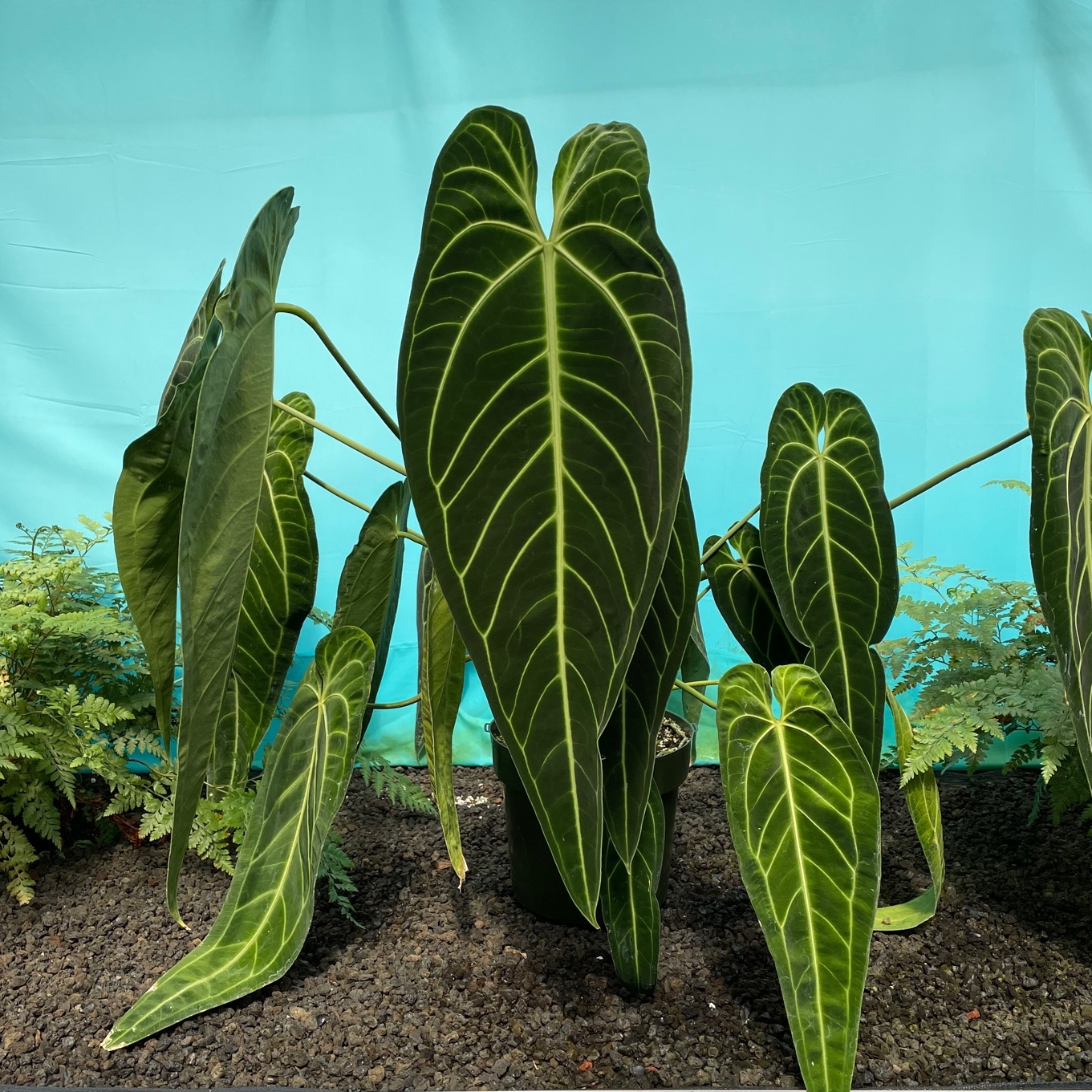
“Discover the majestic beauty of the Anthurium Warocqueanum! Click here to bring this exotic gem into your home today.”
Where to buy Anthurium Warocqueanum? Benefits from importing plants from Thailand
- Shipping: Door to door shipping, fast and safe with Dragon Courier
- Biodiversity: Thailand is known for its rich biodiversity, including a wide variety of aroid species. This diversity allows importers to access a broad range of unique and exotic aroid plants.
- Quality and Health of Plants: The suitable climate helps the plants grown here stay healthy and of high quality.
- Cost-Effectiveness: Due to favorable growing conditions and efficient production methods, Thai aroid plants can often be more cost-effective compared to those from other countries.
- Access to Hybrid Varieties: Thai growers are often involved in the development of new hybrid aroid varieties, offering unique plants that may not be available from other sources.
Anthurium species are the most sought after by aroid plant lovers
Displaying Anthuriums
The magnificent foliage steals the show on these statement plants. Display the Anthurium Warocqueanum in a striking container atop furniture like sideboards, dressers and plant stands to highlight the spectacular leaves. The structural shapes also combine artisticly with other tropicals in lush indoor garden arrangements inspiring the rainforest vibe. Or embrace the solitary beauty shining solo in any well-lit corner. However you showcase it, this exotic tropical is sure to become a treasured jewel of your plant collection.
Conclusion
The velvety heart-shaped foliage and exotic botanical origins of the Anthurium Warocqueanum Queen explain its coveted status in the houseplant world. Caring for this rare tropical beauty indoors provides a fun challenge for experienced collectors while adding intrigue to any space. When given the proper warm, humid and bright conditions with well-draining soil, the Anthurium Warocqueanum unfurls its deeply lobed leaves in a mesmerizing display. Propagate new little plantlets easily to expand your collection of this fascinating specimen. With the right growing environment tailored to its rainforest origins and attentive care, the Queen Anthurium’s regal presence promises to reign in your indoor garden for years to come.
FAQ
- What is Anthurium Warocqueanum Queen?
- The Anthurium Warocqueanum, also known as the Queen Anthurium, is a highly sought-after tropical plant known for its long, velvety, dark green leaves. Native to the rainforests of Colombia, this plant is prized for its unique appearance and is a popular choice among houseplant enthusiasts.
- How do I care for my Anthurium Warocqueanum Queen?
- To care for Anthurium Warocqueanum Queen, provide bright, indirect light, maintain high humidity (above 60%), and water when the top inch of soil feels dry. Ensure good air circulation and use well-draining soil. Avoid overwatering to prevent root rot.
- How often should I water Anthurium Warocqueanum Queen?
- Water your Anthurium Warocqueanum Queen when the top inch of the soil feels dry to the touch, which typically occurs every 7-10 days. However, this can vary based on environmental factors like temperature and humidity. It’s crucial to avoid overwatering and ensure proper drainage.
- Can Anthurium Warocqueanum Queen thrive in low light?
- While Anthurium Warocqueanum Queen can tolerate low light conditions, it thrives best in bright, indirect light. Low light may lead to slower growth and fewer leaves. It’s important to find a balance without exposing the plant to direct sunlight, which can burn the leaves.
- How do I propagate Anthurium Warocqueanum Queen?
- Propagate Anthurium Warocqueanum Queen by stem cuttings or division. Choose a healthy stem with at least one node and a few leaves, and plant it in well-draining soil, keeping it warm and humid. Alternatively, divide the rootball during repotting, ensuring each section has roots and foliage.


